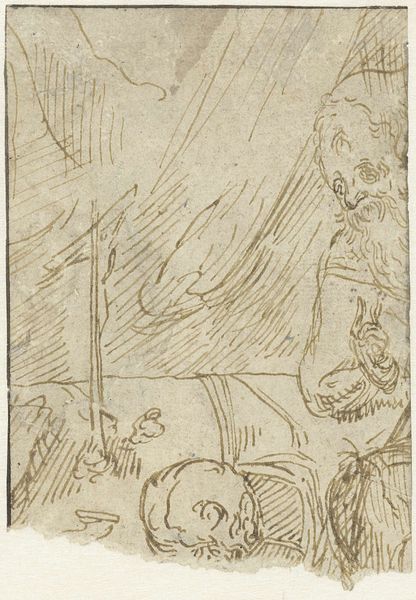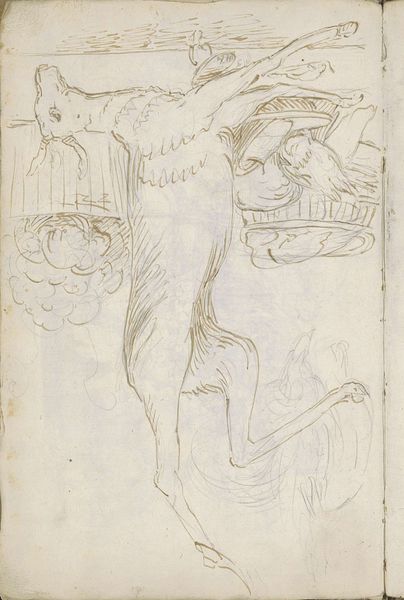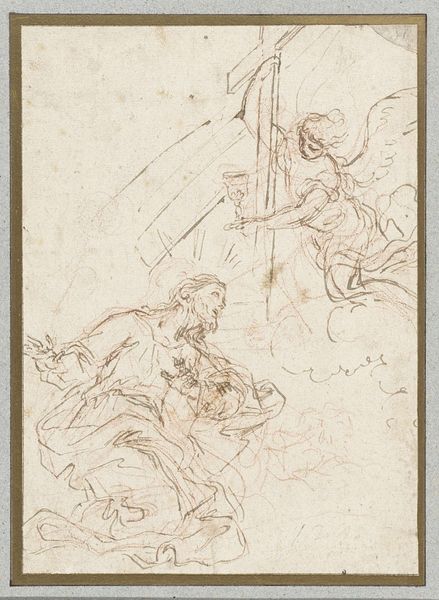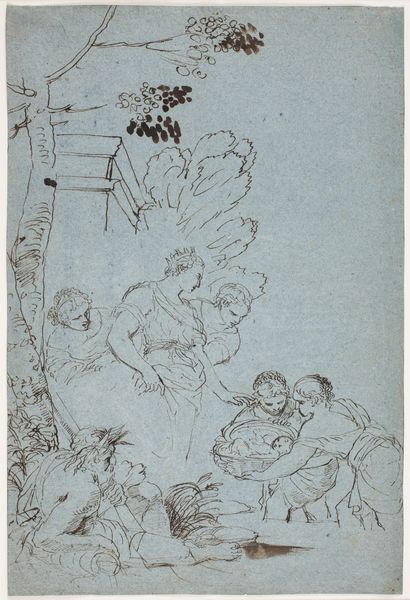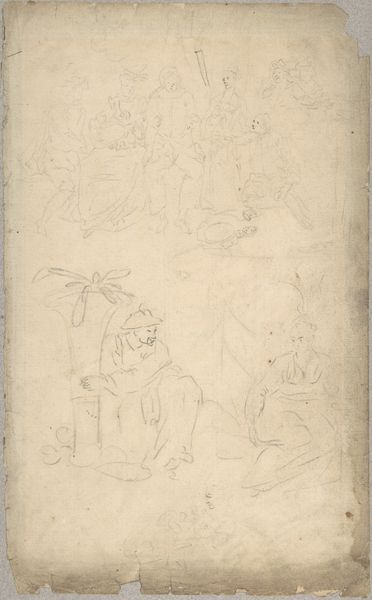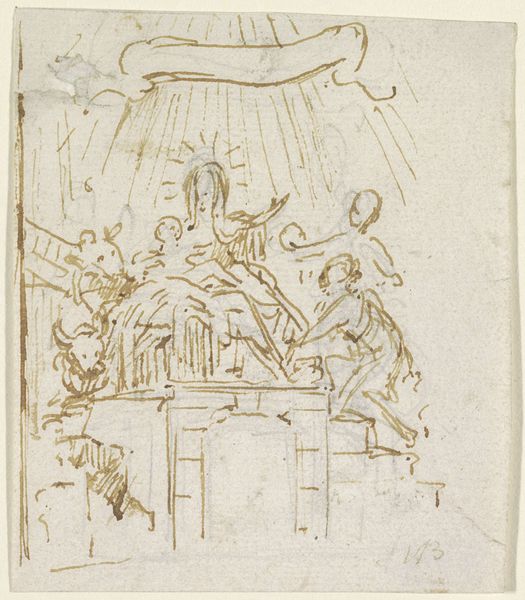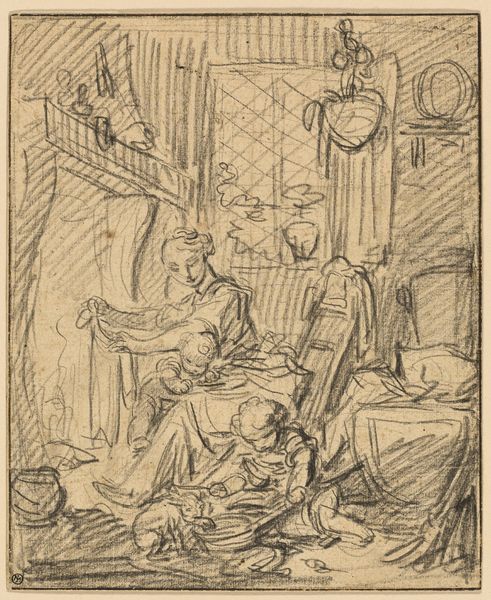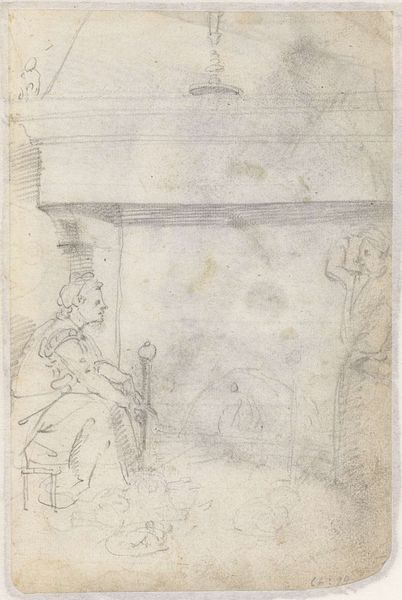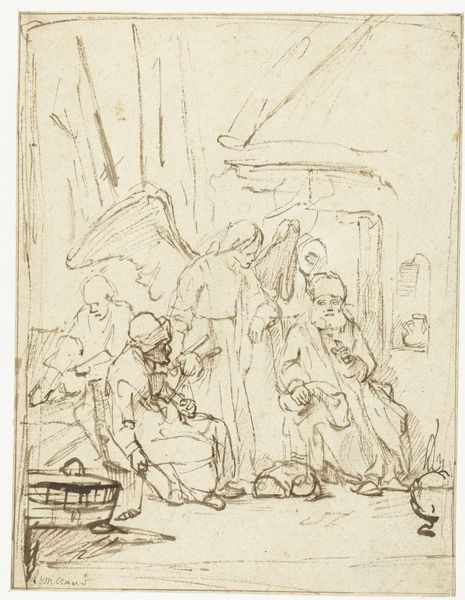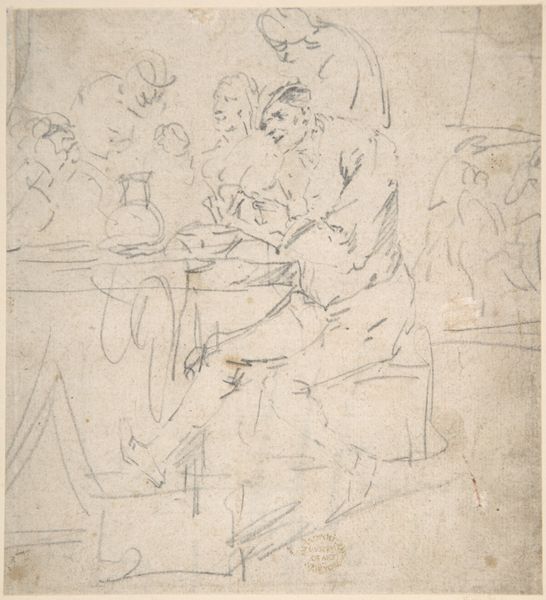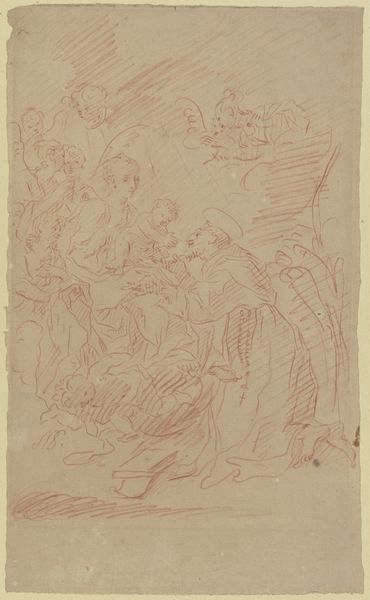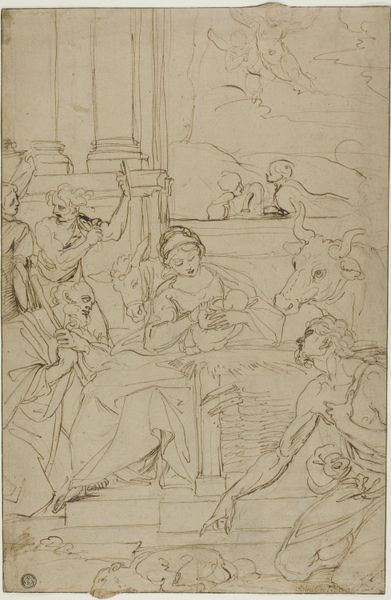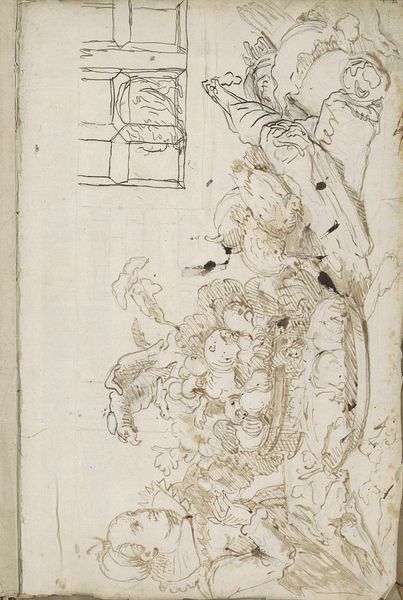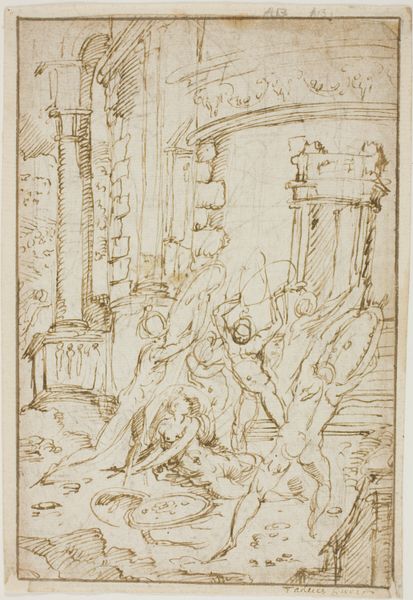
drawing, pencil
#
drawing
#
dutch-golden-age
#
figuration
#
pencil
#
genre-painting
Copyright: Rijks Museum: Open Domain
Editor: This pencil drawing, "Keukenstuk met een vrouw en dood gevogelte," or "Kitchen Scene with a Woman and Dead Poultry," attributed to Paul de Vos from sometime between 1605 and 1678, feels surprisingly modern, almost like a quick sketch for a darker, more elaborate piece. It depicts, as the title suggests, a kitchen scene filled with dead fowl, overseen by a woman. How do you interpret this kind of scene in its historical context? Curator: This sketch offers us a glimpse into the Dutch Golden Age’s complex relationship with food and status. While it appears to be a straightforward depiction of a kitchen scene, remember that these images were consumed within a very particular social and political climate. Do you notice how the inclusion of the woman and the dog transforms it from a simple still life? Editor: Yes, it's not just the objects, but a whole domestic scene being shown. The dog, especially, adds an element of the everyday. Curator: Precisely! De Vos is carefully crafting a narrative about domesticity and abundance, themes closely linked to the burgeoning Dutch Republic’s prosperity. The detailed rendering of the dead game indicates wealth and access to resources, signifying not just food, but a visual representation of the Netherlands’ commercial power and social order. The question then becomes: who was commissioning and viewing these "genre" scenes? Editor: So, it's less about literal sustenance, and more about a demonstration of socio-economic standing at the time? Almost like propaganda in a way? Curator: Exactly. These kitchen scenes became markers of identity. They communicated certain values and aspirations held by the emerging merchant class. Thinking about the public role of art then, what values might they signal? Editor: That's fascinating. I’d always thought of these scenes as simple representations of daily life. Now I understand how intertwined they are with the politics of imagery! Curator: And the crucial role that art played in constructing and reinforcing that identity. Analyzing it like that adds a completely new layer of significance.
Comments
No comments
Be the first to comment and join the conversation on the ultimate creative platform.
